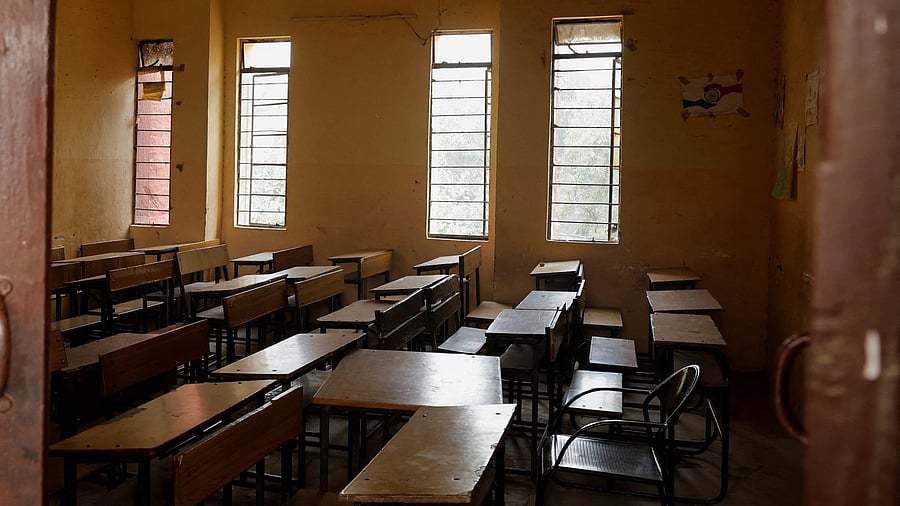
Representative image showing a classroom
Credit: Reuters Photo
Srinagar: Literacy rate among female students in rural Jammu and Kashmir remains significantly below the national average, according to a recent statement made by the Minister of State (MoS) for Education in the Rajya Sabha.
The MoS highlighted a concerning trend of high dropout rates among girls at both elementary and secondary education levels in the region, with figures showing a drop of over 10 per cent till the academic year 2021-22.
The statement, presented in response to a question, pointed out that while overall literacy rates in Jammu and Kashmir have been improving, the gender gap remains a critical issue, especially in rural areas.
The report states that during the 2018-19 academic year, the dropout rate was 6.9 per cent at the elementary level and 17.7 per cent at the secondary level, with these rates slightly improving in 2019-20 to 5.8 per cent and 18.6 per cent, respectively. For the 2020-21 academic year, the dropout rate dropped to 4.2 per cent at the elementary level and 4.6 per cent at the secondary level, followed by 3.8 per cent and 6.3 per cent in 2021-22.
To address the issue of high dropout rates, especially among girls at all levels of education, the government has implemented initiatives under Samagra Shiksha, including the establishment of Kasturba Gandhi Balika Vidyalayas (KGBVs).
These residential schools, which cater to girls in grades 6 to 8 from disadvantaged groups (such as SC, ST, OBC, Minority, and Below Poverty Line (BPL) categories), are located in Educationally Backward Blocks where rural female literacy rates are below the national average.
The MoS emphasised that bridging gender and social gaps in education is a key objective of Samagra Shiksha. The initiative provides various facilities to promote girls’ education, including the opening of neighborhood schools as defined by the state, free uniforms and textbooks for girls up to Class VIII, gender-segregated toilets in all schools, self-defence training for girls from Classes VI to XII, and stipends for CWSN (Children with Special Needs) girls from Classes I to XII.
Additionally, special state-specific projects are offered, such as life skills and awareness programs, sanitary pad vending machines, incinerators, and vocational education at the secondary level.